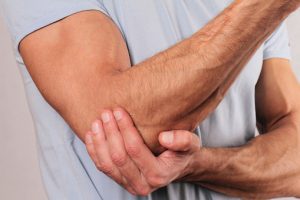 Joint pain can be caused by several different things, including age, injury, or infection. Being able to recognize what kind of pain you are experiencing can help you develop a proper diagnosis of your joint pain which, in turn, can improve treatment so that you stop suffering from tedious pain.
Joint pain can be caused by several different things, including age, injury, or infection. Being able to recognize what kind of pain you are experiencing can help you develop a proper diagnosis of your joint pain which, in turn, can improve treatment so that you stop suffering from tedious pain.
One major cause of joint pain is arthritis, but because there are several different types of arthritis, the type of pain you experience can vary greatly. Here we will not only outline the different types of arthritis, but also the type of pain you will experience so that you can narrow down the cause of your joint pain.
Types of arthritis and their symptoms
Advertisement
Osteoarthritis: Osteoarthritis is the deterioration of cartilage, which is the cushion between joints that protect the bones. When this cartilage is broken down, it causes the bones to rub against each other. With this type of arthritis, movement becomes difficult, joint stiffness is present, there’s inflammation, and a lack of coordination.
Rheumatoid arthritis: Rheumatoid arthritis is an autoimmune disease, meaning the body’s own immune system wrongfully attacks itself – in this case, it attacks the joints. Symptoms include tingling in the hands and feet, difficulties sleeping, and nodules beneath the skin.
Gout: A build-up of purines – a byproduct of uric acid – crystalizes around the joint, which triggers intense pain. Gout most commonly occurs around the big toe and foot. The area may appear red and pain can worsen over the course of 24 hours. Your ability to walk may become hindered as well.
Spondyloarthropathies: This is another autoimmune disease where the immune system attacks the body’s ligaments, which are attached to the bone. Symptoms include pain and stiffness commonly felt in the lower back, but may also affect the hands and feet.
Lupus: Another autoimmune disease, lupus not only affects the joints, but also lungs, skin, brain, kidneys, and other organs. Joint pain and swelling are common symptoms of lupus along with chest pain, hair loss, muscle soreness, and sensitivity to light, to name a few.
Advertisement
Infectious arthritis: When bacteria or a virus infects the joints, it is known as infectious arthritis. The infection can spread to the joints through the blood. Infectious arthritis only affects one joint but it tends to be a large joint. Severe pain while moving is the most common symptom of infectious arthritis. Other symptoms include warmth or redness around the joint, swelling and loss of appetite, increase in heart rate, and chills.
If you experience any of these symptoms, or simply live with joint pain that you cannot get relief from, then speak to your doctor about uncovering the underlying cause so you can receive treatment to improve your pain.
Related: Thumb joint pain: Causes and treatment options
